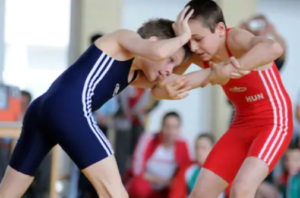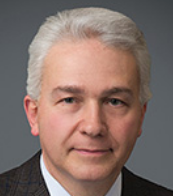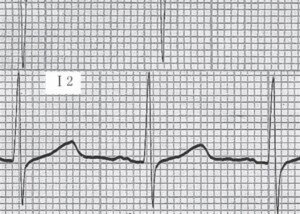
Since an ICD shocks a fibrillating heart from long QT syndrome back into normal rhythm, why can’t people with ICDs play sports and work out?
To the layperson, it doesn’t make sense that once a person with LQTS is given an implantable cardioverter defibrillator, they are still barred from participating in sports other than golf, bowling, billiards, darts, archery and riflery!
Why Can’t LQTS Patients with an ICD Play “Real” Sports?
“Symptomatic patients are counseled to avoid recreational sport activity and all competitive sports to prevent exercise-induced arrhythmia and sudden cardiac death,” says Andrea Natale, MD, cardiac electrophysiologist and executive medical director of the Texas Cardiac Arrhythmia Institute at St. David’s Medical Center.
Dr. Natale continues, “In patients with ICD, intense exercise may predispose them to inappropriate shock delivery, which may lead to temporary loss of consciousness that can be dangerous if the person is swimming or taking part in a car race.”
What actually constitutes “intense” exercise is up to debate. For instance, some physicians consider marathon running (at least a 5K distance) to be intense—due to its duration.
On the other hand, fitness professionals view marathon running (or extended cycling) as steady state (paced) exercise, rather than intense.
Their idea of intense is that of brief but explosive bursts of activity.
Examples include:
• Dashing up a short hill as fast as possible, alternating with several minutes of casual walking for recovery.
• Sprinting across a parking lot, alternating with several minutes of easy walking for recovery.
• A CrossFit “workout of the day” routine.
• Strenuous half-minute bouts of full-body movements alternating with rest periods: squat jumps, lunge jumps, burpees, rapid rope jumping, box jumping.
There are no studies investigating the effects of intense exercise—as defined by fitness professionals such as personal trainers—on long QT syndrome, let alone the efficacy of an ICD on LQTS patients who engage in such exercise.
In other words, studies on high intensity interval training (HIIT) and LQTS are lacking, probably because usually the congenital version is discovered in childhood or the teens, and active people this young typically don’t engage in HIIT, but rather, more endurance-based activities.
Dr. Natale continues, “However, the 2015, AHA/ACC guideline stated that in athletes with symptomatic or electrophysiologically manifesting LQTS, participation in competitive sports may be considered following expert consultation, initiation of treatment and appropriate precautionary measures if the athlete has been asymptomatic for at least three months (Hammond-Haley et al., International Journal of Cardiology, 2016).”
Yes, athletic activity can trigger a fatal cardiac arrest in an athlete with LQTS.
But the new guidelines are no longer so template-based, and rather, are drawn up on a case-by-case basis.

For example, not all LQTSs are the same. The type 1 comes with a particularly high risk of sudden cardiac death during sports participation even with an ICD.
Meanwhile, the main trigger of cardiac arrest for LQTS type 2 is sudden loud noise.
Thus, a person with LQTS2 who has an ICD may be given a green light on hard exercise inside their quiet home as long as someone–and an automated external defibrillator–are present, while competitive volleyball and basketball would be prohibited due to the frequent sudden blows of loud whistles.
More Hope Yet…
The report in the International Journal of Cardiology states, “Exercising with an ICD in situ carries a range of additional risks including inappropriate shocks and lead complications.”
Though this sounds very grim for the young athlete, the recommendations for sports participation sound more hopeful, according to a paper in the Journal of the American College of Cardiology (2015) by Aziz et al.
The JACC paper encourages individualization relating to athletic activity based on a whole-team approach: the youth athlete, parents and cardiac team.
“Experts in pediatric inherited arrhythmias should find a balance between keeping patients with LQTS safe while providing the best quality of life,” states the JACC.
“Above and beyond all other considerations, liberalization of sport participation should only be considered in individuals who:
• are highly compliant with therapy
• maintain adequate hydration and electrolyte status
• avoid prolonging QTc medications
• have access to an automated external defibrillator during sports competition.”
In such cases, coaches should be made aware of the athlete’s situation.
“By no means do we suggest allowing all patients with LQTS, or those at low risk, a ‘life-time clearance’ to participate in all static and dynamic sport activities,” emphasizes the JACC paper.
Rather, LQTS athletes should be followed at a tertiary center by an expert in congenital arrhythmias “who can meticulously risk stratify each patient and devise an individualized plan” that all are comfortable with.
Guidelines for sports participation by those with inherited long QT syndrome and an ICD are continuously evolving as more is learned about this rare syndrome.

 greatest reward is restoring his patients to a life free of cardiac arrhythmia. He pioneered a circumferential ultrasound vein-ablation system to correct atrial fibrillation and performed the procedure on the world’s first five patients.
greatest reward is restoring his patients to a life free of cardiac arrhythmia. He pioneered a circumferential ultrasound vein-ablation system to correct atrial fibrillation and performed the procedure on the world’s first five patients.
























